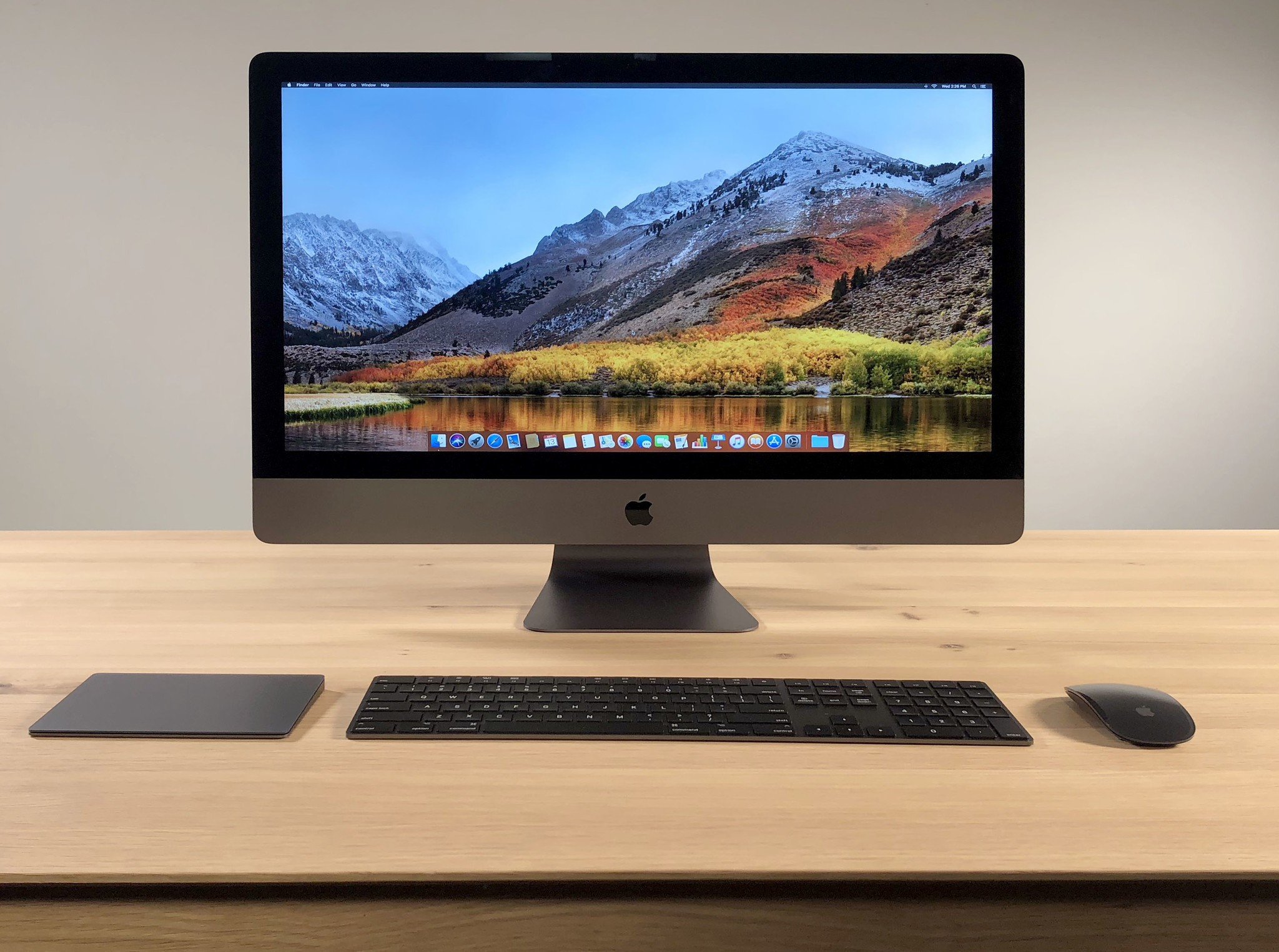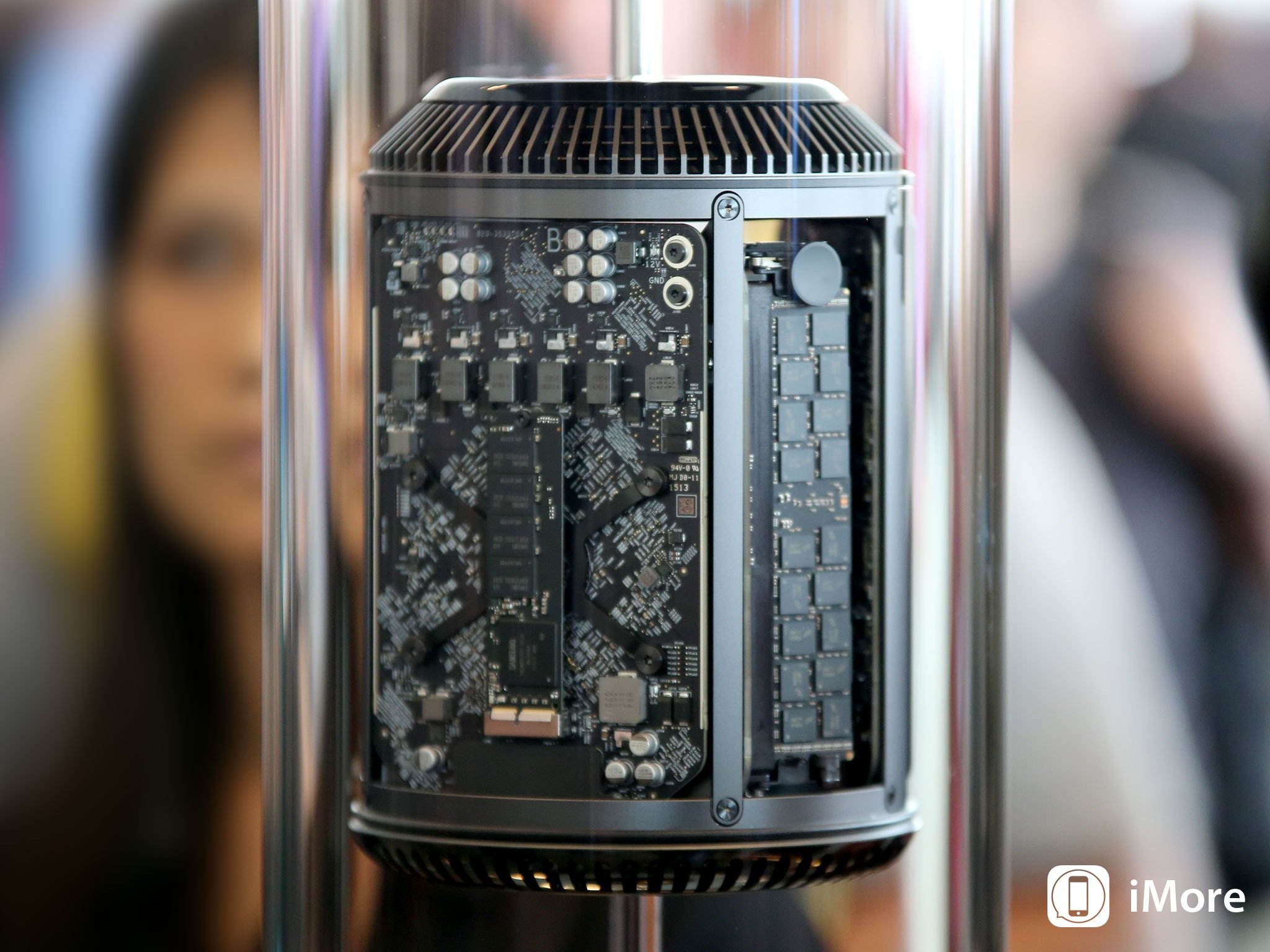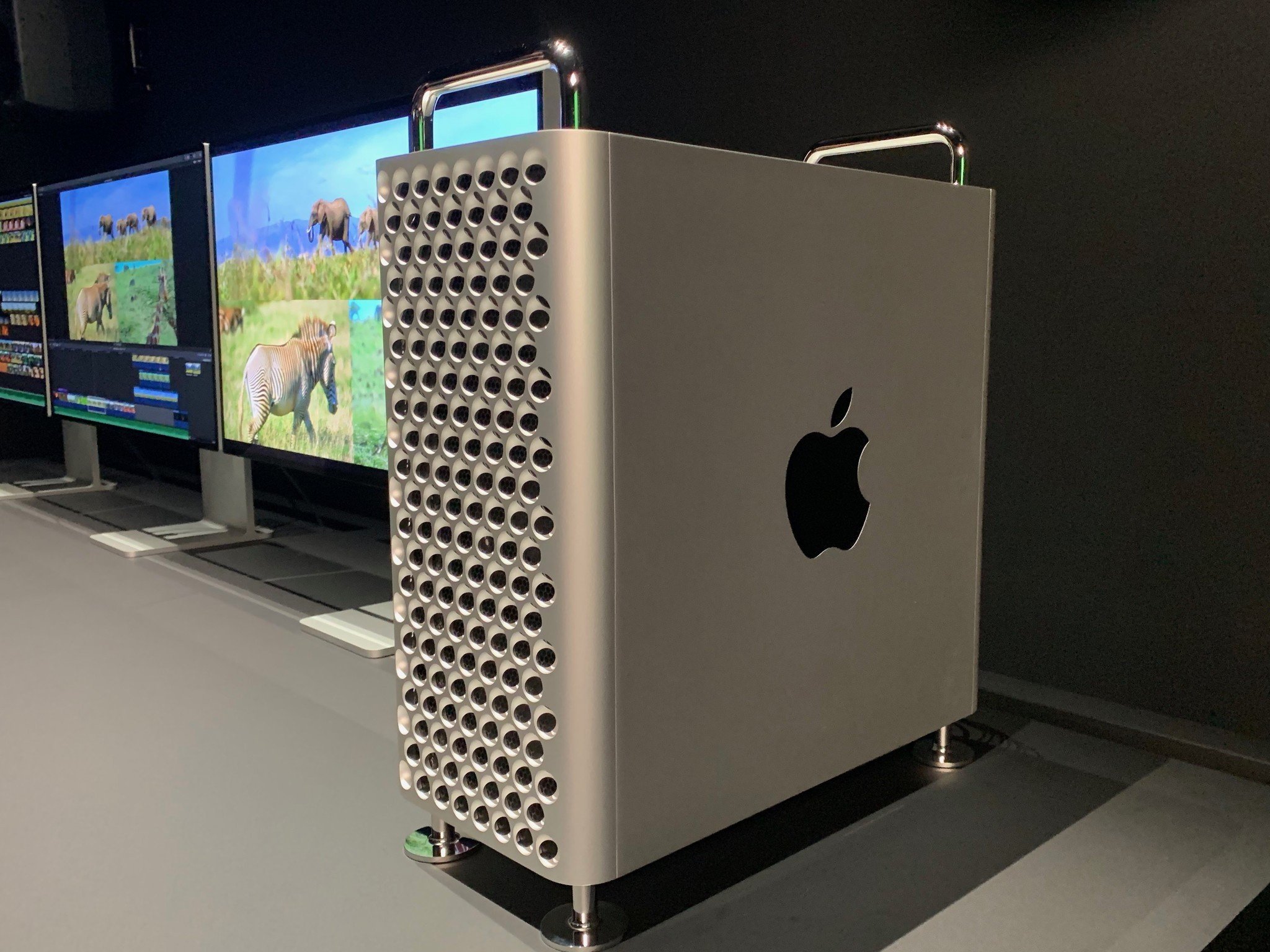Why we need an M1X iMac Pro

Apple MDK'd, murder death killed, the iMac Pro. Not the 27-inch silver Intel non-Pro. But the Space Black. Massively multicore Xeon machine. And while we've since gotten an all-new, all colorful M1 iMac, I want Apple to bring the iMac Pro back as well, in an all-new, all-better, all blacker, all M1X final form. And here's why!
'Not innovating any more my @$$'
In 2013 Apple cut the cheese-grater and introduced the trashcan-shaped Darth Vader helmet of a Mac Pro. A triangle of Xeon CPU and dual AMD GPU that was either meant to be a… a harbinger of the general compute future or just the further appliance-ification of Apple's Mac lineup. Starting at $3000.
It was… maybe the ultimate repercussion of Steve Jobs infamously slapping an iPad down in front of the Mac team and asking why they couldn't just do that.
But then the updates stopped. The trashcan stagnated. Apple claimed they'd painted themselves into a thermal corner, bet too heavily on that dual GPU design, and the industry ended up going the other way. But it's also hard not to think Apple bet way too heavily on that appliance design.

That they saw the success of the iPad in the mainstream market, the rise of a new generation of more casual users that self-identified as pros but didn't have the same big iron needs of traditional pros, and figured driving the Mac in that direction would bring them far greater consumer success.
I think that's why we got the 2016 MacBook Pro, which sold incredibly well to the broad swath of new and aspiring pros but also just plain pissed off so many of the OG pros who just wanted their ports and their scissor switches back.
Same with the 2013 Mac Pro, but worse. Apple took away the ability to expand and update the box but then also failed to provide expanded and updated boxes.
Master your iPhone in minutes
iMore offers spot-on advice and guidance from our team of experts, with decades of Apple device experience to lean on. Learn more with iMore!
A thermal corner but also a strategic brick wall.
The i-as-in-interim-Mac Pro
With the 2013 Mac Pro suddenly dead box computing, but the new modular Mac Pro still a couple of years away, Apple came up with something else. An iMac Pro. I, maybe, for interim. See, Apple couldn't fit newer, hotter, more power-hungry Intel and AMD architectures into the old trashcan, but thanks to a beefed-up active cooling system, they sure could in the old all-in-one. Or, rather, the new 2017 iMac Pro.
From 8 to 18 Xeon cores, ECC RAM, up to 4 TB of SSD, and AMD Vega Pro graphics, all in a space black chassis with new space black accessories. Because everyone knows space black goes with pro like… dark mode goes with Pro apps. Starting at $5000.
With that big, beautiful, 5K P3 display built-in, it proved popular with developers and… MKBHD who literally put it in a pelican case and traveled with it to events so he could get his 8K Red Raw renders done in hours instead of overnight.
Revenge of the cheese-grater

Now, flash forward to 2019, and we finally got that all-new, all modular, revenged of the cheese-grater 2.0. Big Mac Pro is back! Starting at $6000.
Then 2020, when Apple's CEO, Tim Cook, announced they were transitioning from Intel to Apple Silicon, to the M1.
In 2021, when Apple first end-of-lined the Intel iMac Pro, and then John Ternus, the new head of hardware engineering, announced the all-new, all-rainbow colored M1 iMac. Starting at $1300.
Here's the thing — the M1 iMac isn't an iMac Pro. It isn't even a high-end iMac. Apple's still got the 27-inch Intel iMac with up to 10 Comet Lake cores and AMD Radeon Pro… Yeah, no Big Navi in Apple land. Maybe never Big Navi in Apple lands… up to an eventual 256GB of RAM, 8 TB of SSD, Nano texture option for the display… Starting at $1800.
Sure, 10 core… cores aren't 18 Xeon Cores, that 128GB of RAM aren't ECC or error-correcting RAM, and all the other parts are more prosumer than enterprise server-grade, but it's still well beyond the just-announced M1 iMac in everything but performance efficiency.
While performance efficiency is huge, and M1 is… industry-changing… it ain't everything.
So what I'm hoping for, what I'd do if I had the Infinity Stones, the ability to cast Power Word… Thrill… isn't just an M1X iMac… but a full-on M1X iMac Pro.
The M1X iMac Pro
iPhone, iPhone Pro — iPad, iPad Pro — MacBook... Air, MacBook Pro — Mac mini, Mac Pro — even AirPods, AirPods Pro — see where I'm going with this? Apple Watch, Apple Watch Pro — KIDDING! iMac, return of the iMac Pro.
M1 performance efficiency is so, so good Apple can blow past the Intel core… core count, even the Xeon core count, without breaking a sweat. Literally, the heat and power draw would be so low, the bead-blasted aluminum wouldn't even sweat, let alone require those awkward bulges of the past.
For an iMac, where you can't upgrade the GPU anyway, I don't even care about discreet graphics, that's just an implementation detail. Throw cores at the problem.
If Apple can fuse the server-grade architecture of the iMac Pro and the screen tech of the Pro Display XDR with the advances of the final generation of standard iMac, and I mean down to the 32-inch nano-textured mini-LED panel. Starting at around $1800, sure, hopefully, but also going up as high as Apple needs to so they can include options for all the cores, memory, and storage pros need.
That would be one hell of an all-in-one; hey, a nerd can dream machine for the pro mainstream, even when we get the inevitable Apple silicon modular Mac Pro for the highest-end Pros.

Rene Ritchie is one of the most respected Apple analysts in the business, reaching a combined audience of over 40 million readers a month. His YouTube channel, Vector, has over 90 thousand subscribers and 14 million views and his podcasts, including Debug, have been downloaded over 20 million times. He also regularly co-hosts MacBreak Weekly for the TWiT network and co-hosted CES Live! and Talk Mobile. Based in Montreal, Rene is a former director of product marketing, web developer, and graphic designer. He's authored several books and appeared on numerous television and radio segments to discuss Apple and the technology industry. When not working, he likes to cook, grapple, and spend time with his friends and family.
